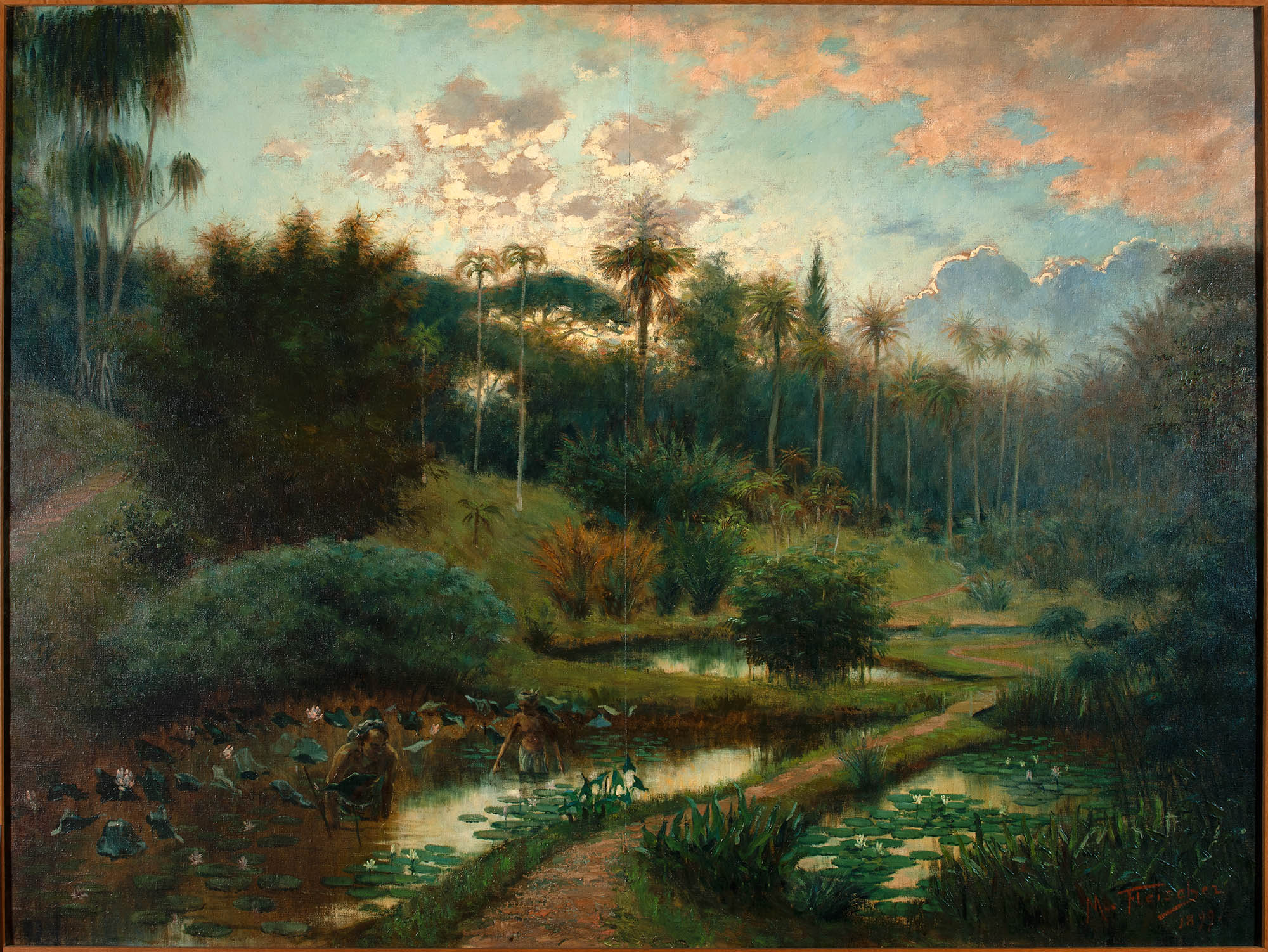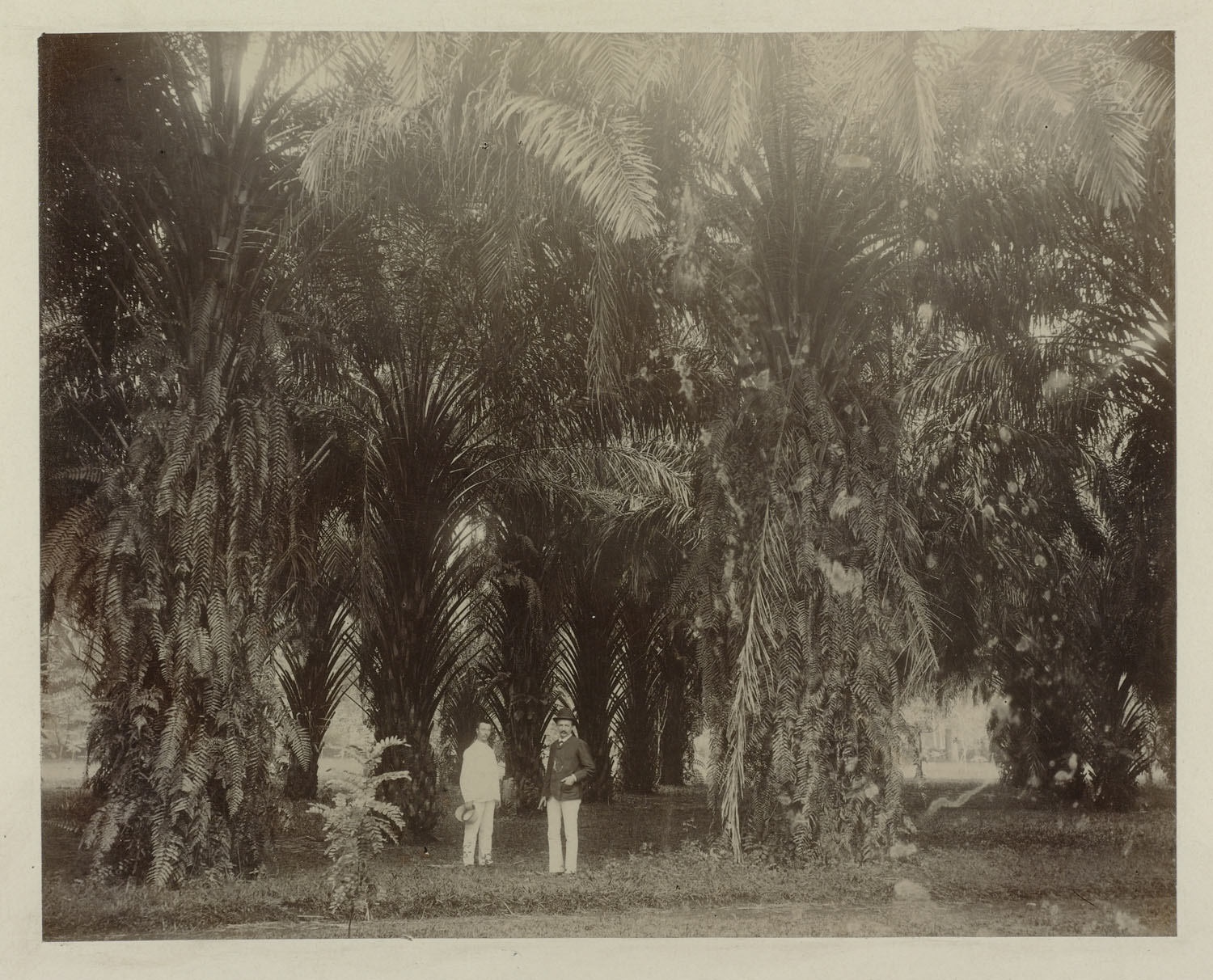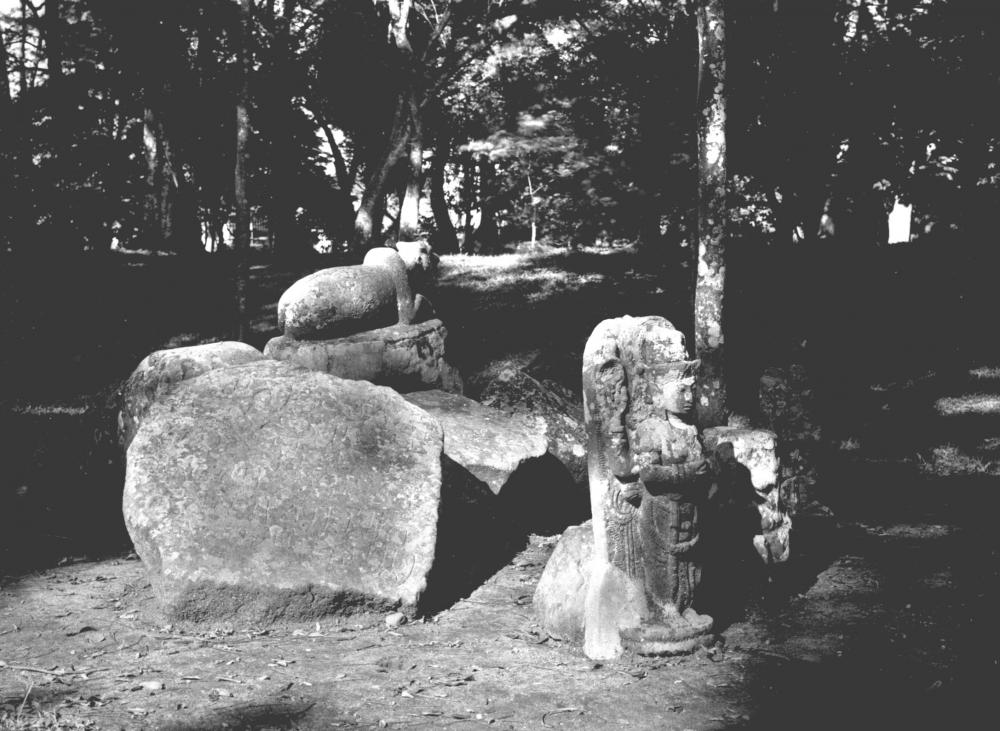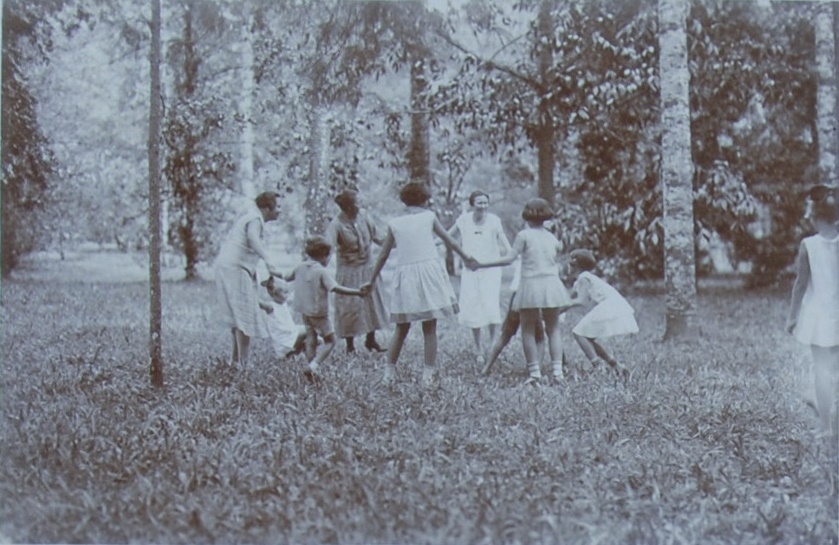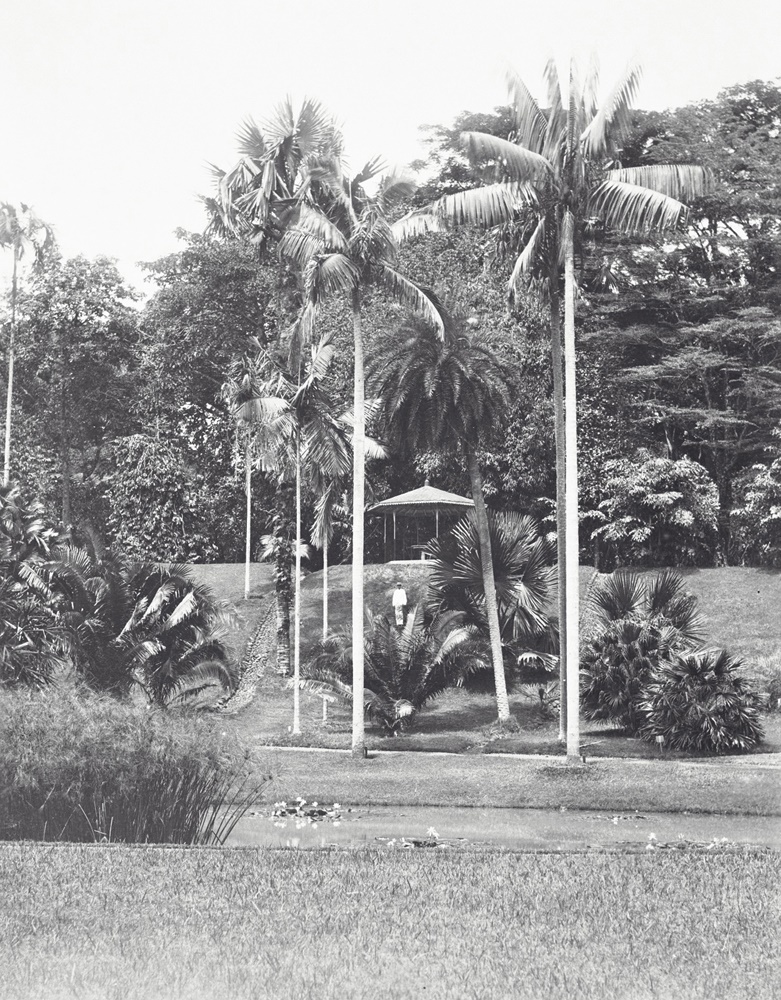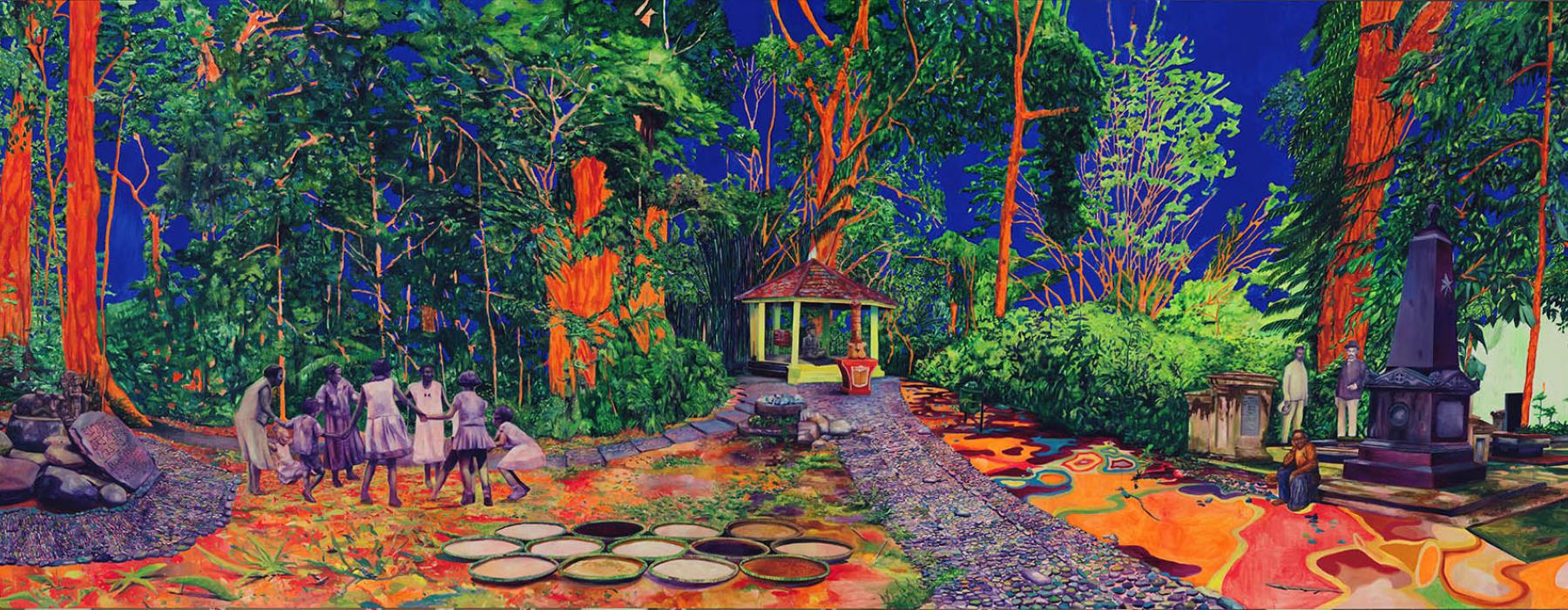
Kebun Raya was established in 1817 to cultivate plants, trees and crops, some from other countries, and to investigate whether they could be grown and economically exploited on Java. The garden was thus at the basis of the ecological devastation caused by the large-scale construction of plantations, not only on Java but also Sumatra and Kalimantan.
In this world story you’ll see how this contemporary Indonesian artist shows the continually changing role of this botanical garden in his painting. From colonial experimental garden to guardian of biodiversity.

